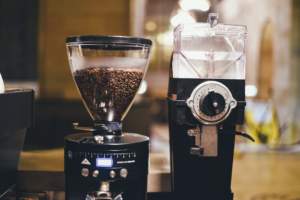You can make fresh coffee in various ways, we prefer using a coffee machine, but when one isn’t to hand, then the French press remains an excellent alternative. The French Press – or cafetière, as it’s more widely known – is a popular method of brewing fresh coffee, especially with new customers. Occasional coffee drinkers will prefer this to buying a larger piece of equipment for home use. A step up from conventional instant coffee, this method allows the use of fresh grounds to brew the perfect cup of java. If you are new to the world of French Press coffee, then Pollards have produced this easy to follow step by step guide to using a cafetière.
Using a cafetière may appear simple, but getting the best cup of coffee takes a little practice, so just follow the steps to make your perfect coffee.
1. Pre-warm your French press
It is always a good idea to pre-warm a french press. So boil your kettle and fill your French press with water. Similar to pre-heating a gravy boat, this step prepares your cafetière, and ensures it’s warm when you start to add your coffee.
2. Grind your beans

A coffee grinder is a must for freshly ground coffee, although you can use pre-ground beans if there’s no alternative.
Use a medium-to-coarse grind: you will need the coffee large enough so that the grounds are retained by the French press’ filter.
If you find too many loose coffee grounds in your finished cup, then you need to grind it a little coarser next time.
3. Measure out your coffee
Empty your cafetière of water, so you can add your coffee.
The typical amount is one heaped tablespoon of coffee per every 200ml of water. So we recommend starting with two heaped tablespoons of coffee per cup of coffee you want to make. There’s no official definition of what a ‘cup’ size is, but this is a good starting point.
You can either add more coffee to make it stronger, or use less coffee to make it weaker, depending on your taste.
If your grinder features a dosing control, you can use this to grind the exact amount of coffee you need.
4. Add hot water
We say hot water, not boiling water. This is because you do not want to add boiling water to your coffee, as it will spoil and burn. The ideal temperature for coffee is between 85ºC and 95ºC.
Use a thermometer to measure your kettle’s temperature the first time you use a French press, and time how long it takes the water to drop to the perfect temperature. That will make it quicker next time.
Once your water is at the right temperature, pour it slowly into the French press on top of your coffee grounds.
TIP: If your coffee is fresh, you’ll see a rich foam on top. Out-of-date coffee will leave a flat and dull finish.
5. Stir your coffee
Stir your coffee granules into the water gently. This agitates the beans slightly ensuring they are all covered in water and extracting flavour at the same time. Don’t stir too much as you will over extract. Over stirring would also make it harder to keep replicate and you will lose consistency.
6. Wait for the coffee to brew
Place the lid of the cafetière on and slowly push down the plunger until the coffee grounds are sitting just beneath the surface of the water level. Then, sit back and let the coffee brew.
Again, the time to brew will depend on the taste you wish to achieve. Anywhere between three to five minutes will be right, depending on how strong you like your coffee; most people say four minutes suits them. Experiment with different brew times to see which delivers your perfect cup of coffee. You may even find that different times work better with different types of coffee.
Obviously the grind matters too so experiment and you will find the perfect combination for your taste. Your supplier may be able to advise you on the grind and timings they use for a specific coffee. But each person is individual and tastes vary.
7. Press down the plunger
When your time’s up, slowly depress the plunger until it’s all the way down: a slow and smooth action is best, since it ensures you don’t force coffee up and out of the spout. This action pushes the coffee grounds down and away from the coffee drink.
8. Drink your coffee
It’s best to empty the French press where you can, because the coffee grounds left inside still make contact with the water, continuing the brewing process. Coffee left for too long in the cafetière will become bitter with time.
Got any coffee tips? Let us know about them on Twitter @PollardsUK



Leave a Comment